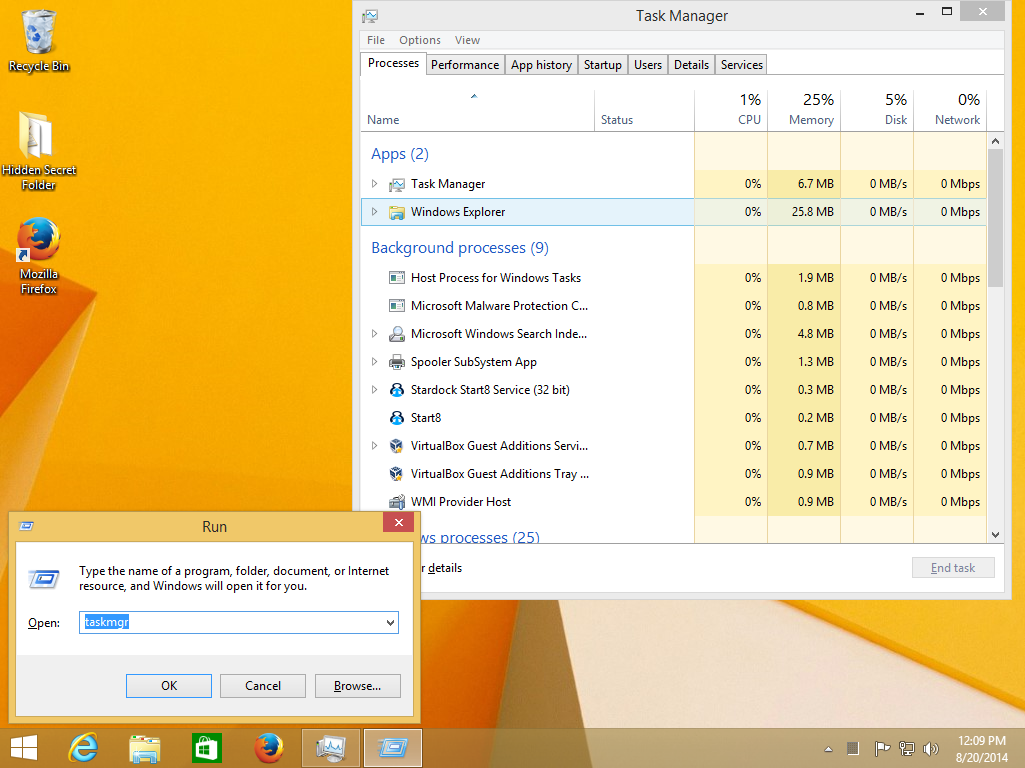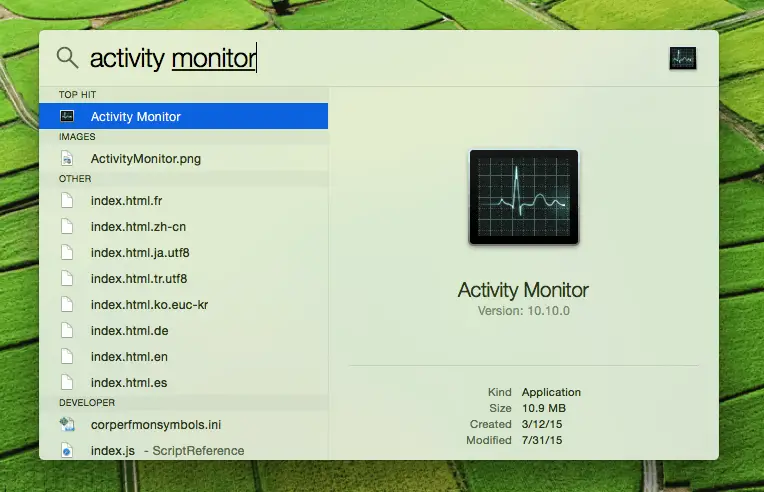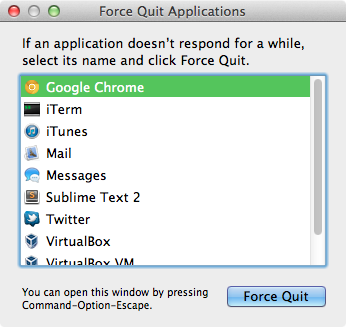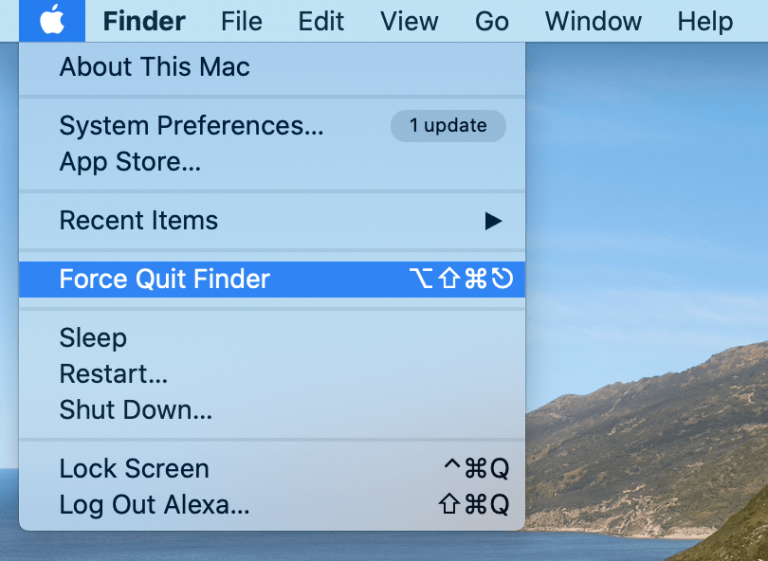

- #MAC TASK MANAGER KEYSTROKE HOW TO#
- #MAC TASK MANAGER KEYSTROKE SOFTWARE#
- #MAC TASK MANAGER KEYSTROKE MAC#
- #MAC TASK MANAGER KEYSTROKE WINDOWS#
Release the keys when you see white text on the screen. #MAC TASK MANAGER KEYSTROKE MAC#
Start or restart your Mac and immediately press and hold command-S on your keyboard. You'll want to be an advanced user if you're considering this move. If you're comfortable with UNIX, sometimes you may want to boot your Mac in single-user mode, which lets you try and isolate startup-related issues. Release the keys when you see the Apple logo or a spinning globe. Startup or restart your Mac and immediately press and hold command-R on your keyboard. #MAC TASK MANAGER KEYSTROKE HOW TO#
If any of that is the case, then here's what to do: How to boot up your Mac in Recovery Mode You may also need to restore from a Time Machine backup. Sometimes, as a last-ditch effort, you need to boot in Recovery Mode, and either repair a disk or (NOOOOO!) reinstall macOS.

You may have to go back into System Preferences and adjust settings like volume and display resolution to your liking since they get reset when you reset the NVRAM. If you have a Mac that plays a startup chime, you can release the keys after you heard it a second time.
Release the keys after about 20 seconds. Start or restart your Mac and immediately press and hold command-option-P-R on your keyboard. How to reset the NVRAM and PRAM on your Mac If you're having a complicated issue with your Mac, this is an excellent place to start. This is a small amount of memory that your Mac uses to store settings that it wants to access quickly. One of the first fixes you'll find on any forum is resetting the NVRAM (nonvolatile random-access memory). It can be any random issue from iCloud not allowing you to sign in to certain apps just not opening. Sometimes specific processes on your Mac just don't work. Reset the NVRAM and PRAM: option-command-P-R Release the N key when you see the choices appear. Start or restart your Mac and immediately press and hold the N key on your keyboard. Your Mac must have capable firmware to boot from a system. Start up from a NetBoot server: Nīooting from a NetBoot server allows you to boot from a network, rather than a local hard disk or optical disk drive. You can also hold option-D to start up from either utility over the internet. Select Apple Hardware Test or Apple Diagnostics.  Release the D key when you see the choices appear. Start or restart your Mac and immediately press and hold the D key on your keyboard. How to start up from the Apple Hardware Test or Apple Diagnostics You can run Apple Diagnostics once you think you've isolated the issue to a possible hardware issue. If there are issues with your Mac that you think may be related to the hardware, you can run the Apple Hardware Test. Start up from Apple Hardware Test or Apple Diagnostics: D Click the arrow or press return on your keyboard. Release the option key when you see the Startup Manager window. Start or restart your Mac and immediately press and hold the option key on your keyboard.
Release the D key when you see the choices appear. Start or restart your Mac and immediately press and hold the D key on your keyboard. How to start up from the Apple Hardware Test or Apple Diagnostics You can run Apple Diagnostics once you think you've isolated the issue to a possible hardware issue. If there are issues with your Mac that you think may be related to the hardware, you can run the Apple Hardware Test. Start up from Apple Hardware Test or Apple Diagnostics: D Click the arrow or press return on your keyboard. Release the option key when you see the Startup Manager window. Start or restart your Mac and immediately press and hold the option key on your keyboard. #MAC TASK MANAGER KEYSTROKE WINDOWS#
So if you have your Mac partitioned to run Windows or a macOS beta, for example, you can select that startup disk instead of the default disk.

The Startup Manager lets you choose a different startup disk during boot. You can leave safe mode by restarting your Mac without pressing any keys during startup.
Release the shift key when you see the login window. Start or restart your Mac and immediately press and hold shift on your keyboard. Deletes font caches, kernel cache, and other system cache files. Prevents Startup Items and Login items from opening automatically. Verifies startup disk and tries to repair directory issues if needed. #MAC TASK MANAGER KEYSTROKE SOFTWARE#
Safe mode is a way of starting up your Mac that makes sure it performs certain checks and prevents specific software from loading or opening automatically.
Start up from Apple Hardware Test or Apple Diagnostics. Here are all the keyboard shortcuts you can use when starting up your Mac! Whatever your needs, you can boot your Mac in a variety of modes to complete a task before startup all you need to do is press some keys down and wait for the chime (unless you have a newer MacBook Pro, sorry). Sometimes you need to boot in Recovery Mode to reinstall an OS or recover your hard drive via the internet. Sometimes your Mac isn't running correctly, so you need to reset the NVRAM and PRAM.








 0 kommentar(er)
0 kommentar(er)
